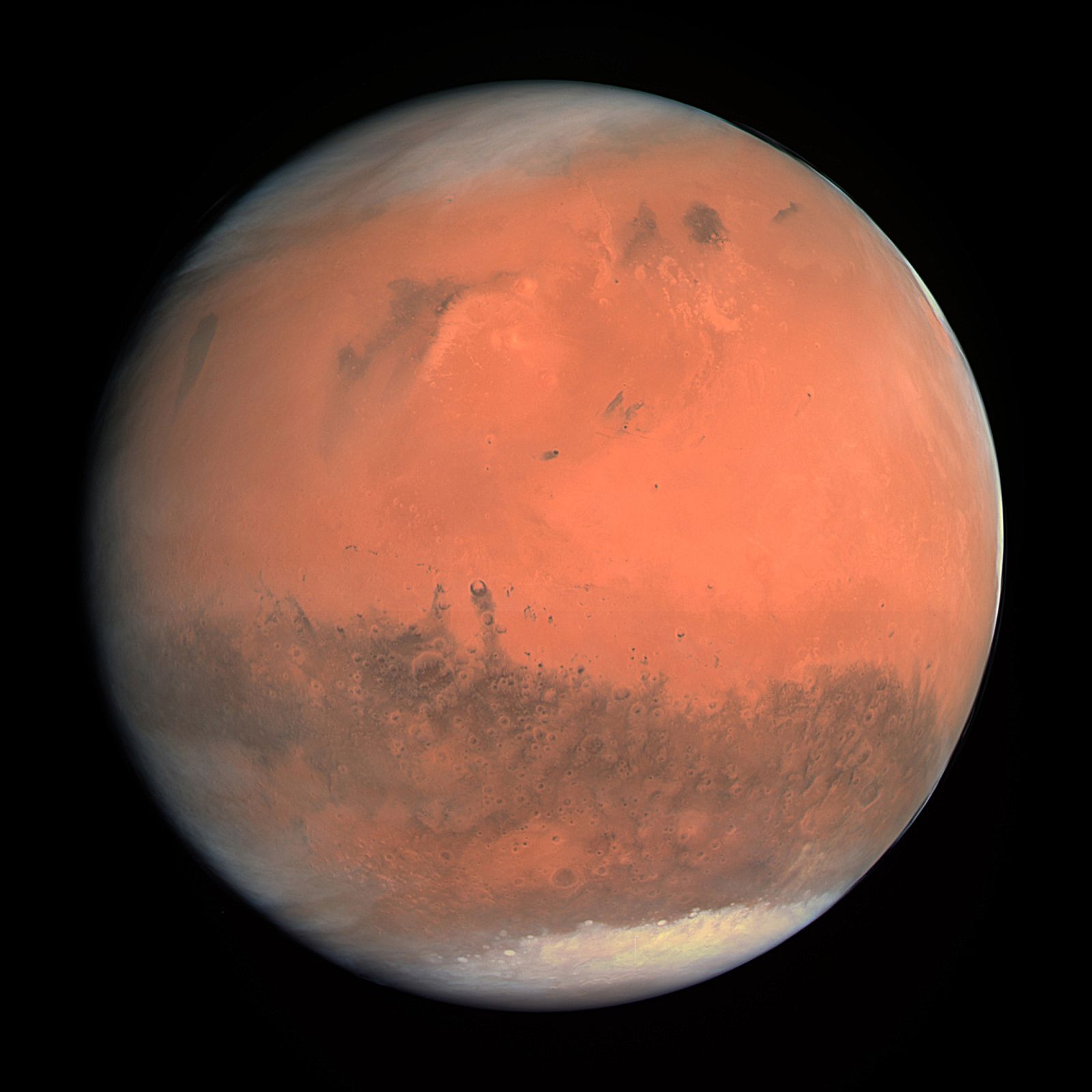Organic remnants discovered on Mars 🧐
Published by Cédric,
Article author: Cédric DEPOND
Source: Proceedings of the National Academy of Sciences
Other Languages: FR, DE, ES, PT
Article author: Cédric DEPOND
Source: Proceedings of the National Academy of Sciences
Other Languages: FR, DE, ES, PT
Follow us on Google News (click on ☆)

A true-color image of the planet Mars, taken on February 24, 2007, by the OSIRIS instrument aboard the European Space Agency's Rosetta probe during its flyby of the planet. The image was generated using OSIRIS's orange (red), green, and blue filters. The photo was taken from approximately 240,000 km (about 149,000 miles) away from the planet. Its resolution is about 1 pixel = 5 km (3.1 miles).
The discovery of complex organic molecules on Mars, dating back around 3.7 billion years, raises fundamental questions about the possibility of past life on the Red Planet. These molecules—long carbon chains similar to terrestrial fatty acids—were found in an ancient lakebed by NASA's Curiosity rover. This discovery, published in the journal Proceedings of the National Academy of Sciences, opens new perspectives on Mars's past habitability and the search for extraterrestrial life traces.
Remnants of a bygone era
Carbon chains containing up to 12 carbon atoms have been identified in Martian rock samples. These molecules, preserved for billions of years, could be remnants of ancient biological activity. Curiosity, equipped with its SAM instrument, made this discovery possible by revealing complex organic compounds.
The absence of geological activity and Mars's arid climate contributed to the preservation of these molecules. They date back to a time when life was emerging on Earth, highlighting a possible similarity in the evolution of both planets. While their presence is not proof of life, it indicates that the building blocks necessary for life were present.
Future prospects
The discovery of these organic molecules fuels future Martian exploration missions. Analyzing these compounds could reveal whether Mars once hosted life. The ESA's ExoMars and NASA-ESA's Mars Sample Return missions, planned for the coming decades, will further investigate these findings.
Beyond Mars, the SAM instrument will be adapted for the Dragonfly mission to Titan, Saturn's moon. This exploration aims to understand the organic chemistry that may exist on Titan. The discovery of organic molecules on Mars opens new perspectives on prebiotic chemistry in the Solar System.
Going further: What are organic molecules?
Organic molecules are chemical compounds containing carbon, often associated with life. They can form through biological or abiotic processes. Fatty acids, found on Mars, are examples of organic molecules essential for cellular membranes.
On Earth, organic molecules are the building blocks of life, forming complex structures like DNA and proteins. Their presence on Mars suggests similar chemical processes may have occurred there. While their discovery is not proof of life, it indicates that the fundamental elements were present.